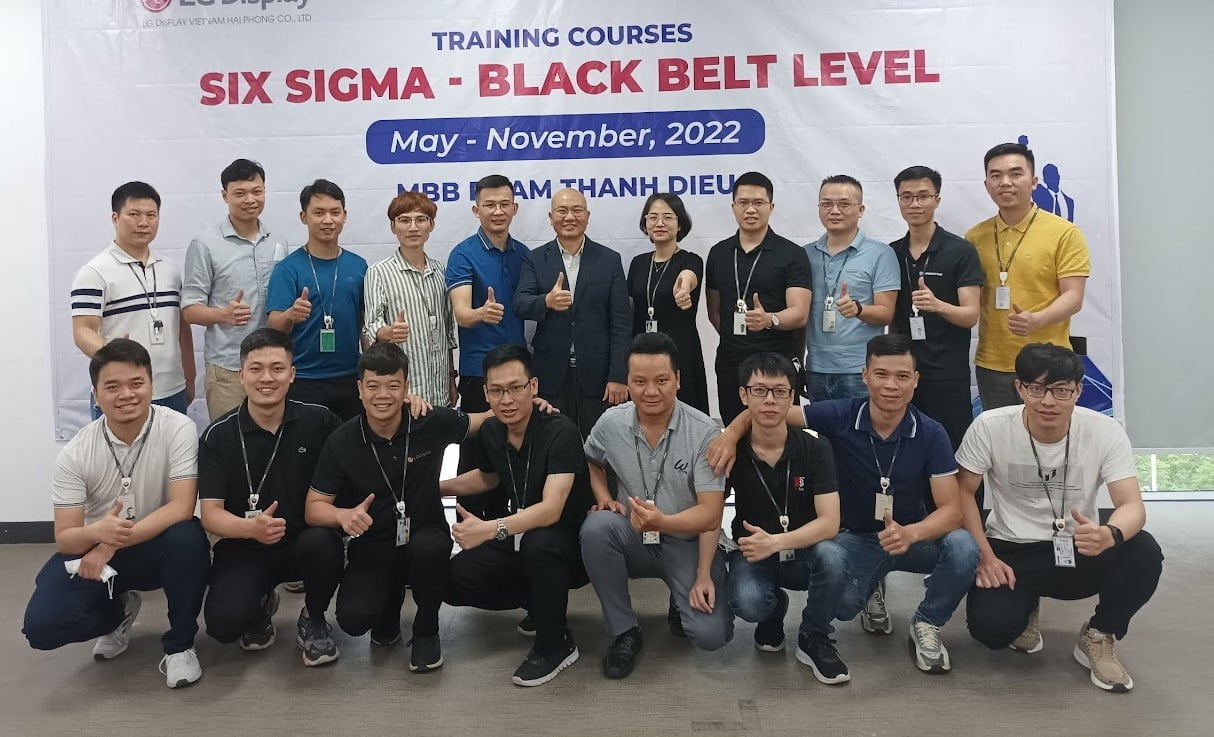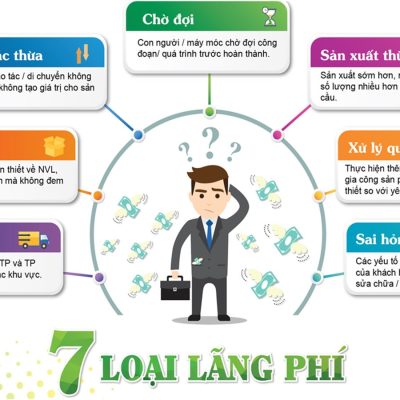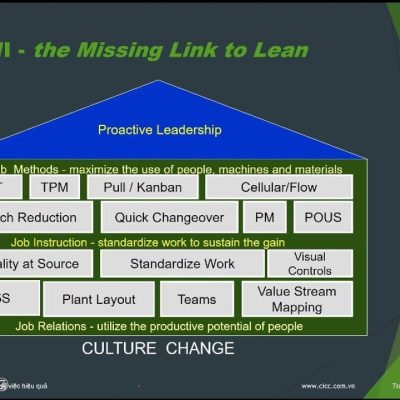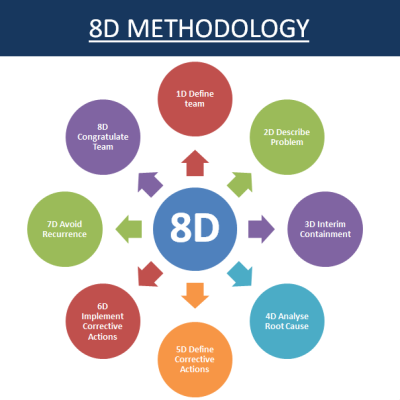Lean Six Sigma Black Belt là một chuẩn chức danh trong lĩnh vực quản lý chất lượng và hiệu suất. Nó là một cấp độ cao trong hệ thống các mức chứng chỉ Lean Six Sigma, được sử dụng để đánh giá và công nhận năng lực và kiến thức của một cá nhân trong việc triển khai các phương pháp Lean và Six Sigma.

Người đạt được chứng chỉ Lean Six Sigma Black Belt đã hoàn thành một khóa đào tạo chuyên sâu và có thể thực hiện vai trò lãnh đạo trong việc triển khai dự án cải tiến quy trình và tối ưu hóa hiệu suất. Họ có khả năng dẫn dắt nhóm làm việc, sử dụng các công cụ và kỹ thuật phân tích số liệu, và áp dụng các phương pháp Lean và Six Sigma để giảm thiểu lãng phí, tăng cường chất lượng và cải thiện hiệu suất tổ chức.
Chứng chỉ Lean Six Sigma Black Belt thường yêu cầu kiến thức sâu về các phương pháp Lean và Six Sigma, bao gồm các khái niệm cơ bản và kỹ thuật phân tích dữ liệu. Người đạt được chứng chỉ này thường có khả năng thực hiện dự án cải tiến quy trình phức tạp và tác động đáng kể đến hiệu suất tổ chức.
Để đạt được chứng chỉ Lean Six Sigma Black Belt, CiCC yêu cầu Black Belt phải hoàn thành ít nhất hai dự án cải tiến sử dụng hai phương pháp DMAIC (Define, Measure, Analyze, Improve, Control) và DMADV (Define, Measure, Analyze, Design, Verify).

Phương pháp DMAIC được sử dụng để cải tiến và tối ưu hóa các quy trình hiện tại. Quá trình này bao gồm định nghĩa mục tiêu, đo lường hiện trạng, phân tích nguyên nhân, triển khai các biện pháp cải tiến và duy trì kiểm soát.

Phương pháp DMADV, được sử dụng trong các dự án thiết kế quy trình mới, bao gồm định nghĩa mục tiêu, đo lường yêu cầu, phân tích, thiết kế và xác minh.
Bằng cách hoàn thành ít nhất hai dự án sử dụng cả hai phương pháp DMAIC và DMADV, người đạt chứng chỉ Lean Six Sigma Black Belt chứng minh được khả năng áp dụng các phương pháp cải tiến quy trình và thiết kế quy trình mới theo các tiêu chuẩn của Lean Six Sigma.
The program “GB upgrade to BB” is designed for LGD to provide in advance of Lean Six Sigma Theory and Lean Six Sigma Tools using and application. It also provides company’s key staff “BB” the ability to apply the appropriate tool for Lean Six Sigma Project of continuous improvement in their respective areas.
Besides the Lean Six Sigma knowledge and technical, participants also know how to promote, maintain and manage Lean Six Sigma and how to built culture that employees always have the ability to detect, identify, select and proficient use of methods and Lean Six Sigma tools to solve problems and find optimal innovative solutions for customer and company in the future.


Duration:
12 days (Training plan please see Master Plan as Appendix A. attached)
Purpose:
To provide Lean Six Sigma Black Belt with additional quality tools and statistical tools that are indispensable to run projects of greater complexity and that have a greater impact on the overall organization’s performance.
Target Audience:
Lean Six Sigma Black Belt candidates who are trained Lean Six Sigma Green Belts with a proven history for success and excellent interpersonal skills. Leading teams in completing process improvement projects is one of the most critical elements for a successful Lean Six Sigma initiative.

Learning Objectives
At the end of this workshop, participants will be able to:
- Apply statistical software (Minitab) in data collection and data analysis.
- Understand the importance of mastering key foundational statistical tools (e.g., the normal theory).
- Apply advanced statistical tools in the MEASURE, ANALYZE and CONTROL phases of the DMAIC methodology.
- Coach Green Belts to improve the outcomes of their green belt projects.
Major Topics
- Introduction to Minitab (for application throughout the course)
- The normal theory, and transformation to normality
- Process capability
- Sampling and measurement system analysis (MSA)
- Hypothesis testing
- Regression analysis
- Design of experiments (DOE)
- Advanced Control charts
Note: Certification as a Lean Six Sigma Black Belt requires successful completion of this course, a passing grade on the final examination, and submission of a detailed report of 02 successful projects.
Method Key:
- Example = example from outside data
- Exercise = exercise on case study or outside data
- Project exercise = exercise on the participant’s actual project


Program Contents:
| MODULE | TOPICS | METHOD | TIME |
| Introduction | · Course purpose & objectives | Presentation and exercise | Day 1
Morning |
| · Warm-up activity | |||
| Storyboard Gallery | · Gallery walk with storyboards displayed | Presentations and critique | |
| · Feedback | |||
| Introduction to Minitab
| · Opening Minitab
· Getting data · Saving files · Time plots · Histograms · Dot plots | Presentations, examples, and exercises
| |
| Introduction to Minitab (cont.) | · Scatter plots
· Pareto charts · Individuals control charts · Review | Presentations, examples, and exercises | Day 1
Afternoon |
| Normal Theory | · Understanding variation | ||
| Wrap-up | · Summarize | Presentation, discussion | |
| · Preview next day | |||
| · Evaluation | |||
| Introduction | · Review evaluations Day 1 | Presentation, discussion | Day 2
Morning |
| · Questions and answers | |||
| Normal Theory | · Understanding variation
· Normal theory · Testing for Normality · Transforming to Normality | Presentations, examples, and exercises | |
| Normal Theory (cont.) | · Choosing a transformation | Presentations, examples, and exercises | Day 2
Afternoon |
| · Using transformed data with process sigma and control charts | |||
| Advanced Process Sigma | · Using Method 1 or Method 2 to calculate process sigma | Presentation, examples, and exercises | |
| · Review of process sigma concepts | |||
| · Understanding shift | |||
| · Process analysis | |||
| · How to calculate shift | |||
| Wrap-up | · Summarize | Presentation, discussion | |
| · Preview next day | |||
| · Evaluation | |||
| Introduction | · Review evaluations Day 2 | Presentation, discussion | Day 3
Morning |
| · Questions and answers | |||
| Tests of Hypothesis: Making Comparisons | · Using distributions to judge differences
· Comparing two group averages: The t-test · Overview of hypothesis tests · Comparing two group averages with matched data: The paired t-test · Comparing two or more group averages: ANOVA, part 1 | Presentation, examples, and exercises | |
| Tests of Hypothesis: Making Comparisons (cont.) | · Comparing variation between groups: ANOVA, part 2 | Presentation, examples, exercises, and project exercise | Day 3
Afternoon |
| · Comparing two or more group proportions: The chi-square test | |||
| Advanced Control Charts | · Variations and individuals charts | Presentation, examples, and exercises | |
| Wrap-up | · Summarize | Presentation, discussion | |
| · Preview next day | |||
| · Evaluation | |||
| Introduction | · Review evaluations Day 3 | Presentation, discussion | Day 4
Morning |
| · Questions and answers | |||
| Advanced Control Charts (cont.) | · Variation and individuals charts | Presentation, examples, and exercises | |
| · Control charts for discrete data: p, np, c, and u charts | |||
| · Control charts for discrete data: p, np, c, and u charts (cont.) | |||
| Advanced Control Charts (cont.) | · Control charts for high-volume processes with subgroups: x-bar, r charts | Presentation, examples, exercises, and project exercise | Day 4
Afternoon |
| · Control charts for detecting small shifts quickly: EWMA charts | |||
| · Using control charts | |||
| Wrap-up | · Summarize | Presentation, discussion | |
| · Preview next day | |||
| · Evaluation | |||
| Introduction | · Review evaluations Day 4 | Presentation, discussion | Day 5
Morning |
| · Questions and answers | |||
| Improving Measurement Systems | · Background | Presentation, examples, and exercises | |
| · Gage R&R study | |||
| Improving Measurement Systems (cont.) | · Gage linearity study | Presentation, examples, and exercises | Day 5
Afternoon |
| · Checking a measurement system for discrete data | |||
| Wrap-up | · Summarize | Presentation, discussion | |
| · Preview next week | |||
| · Evaluation | |||
| Introduction | · Review evaluations Day 5
· Questions and answers | Presentation and exercise | Day 6
Morning |
| Project Presentations | · Share storyboards | Presentation, discussion | |
| · Share storyboards (cont.) | |||
| Quiz | · Quiz | ||
| Regression Analysis | · Introduction to linear regression | Presentation, examples | Day 6
Afternoon |
| Regression Analysis (cont.) | · Basics of regression analysis | Presentation, examples, and exercises | |
| · General procedure for doing regression analysis (one X) | |||
| Wrap-up | · Summarize | Presentation, discussion | |
| · Preview next day | |||
| · Evaluation | |||
| Introduction | · Review evaluations Day 6 | Presentation, discussion | Day 7
Morning |
| · Questions and answers | |||
| Regression Analysis (cont.) | · Regression analysis with transformed data
· Introduction to multiple linear regression · Multiple linear regression (cont.) · Working with multiple regression | Presentation, examples, and exercises | |
| Regression Analysis (cont.) | · Working with multiple linear regression (cont.)
· General procedure for multiple regression · Introduction to curvilinear regression and exercises · Regression with discrete X’s | Presentation, examples, and exercises | Day 7
Afternoon |
| Wrap-up | · Summarize | Presentation, discussion | |
| · Preview next day | |||
| · Evaluation | |||
| Introduction | · Review evaluations Day 7 | Presentation, discussion | Day 8
Morning |
| · Questions and answers | |||
| Regression Analysis (cont.) | · Logistic regression (discrete Y’s) | Presentation, examples, exercises, project exercise | |
| Sampling | · Determining sample size | Presentation, examples, and exercises | |
| Sampling (cont.) | · Determining sample size (cont.)
· Population versus process sampling · Sampling approaches · Sampling approaches (cont.) | Presentation, examples, and exercises | Day 8
Afternoon |
| Design of Experiments (DOE) | · Introduction to Design of Experiments | Presentation, examples, and exercises | |
| · Computer simulation | |||
| Wrap-up | · Summarize | Presentation, discussion | |
| · Preview next day | |||
| · Evaluation | |||
| Introduction | · Review evaluations Day 8 | Presentation, discussion | Day 9
Morning |
| · Questions and answers | |||
| DOE (cont.) | · Computer simulation (cont.)
· The factorial approach to designed experiments · Designing a full factorial experiment: example · Doing the experiment: example · Analyzing an experiment: example | Presentation, examples, and exercises | |
| DOE (cont.) | · Reducing experimental trials: The half- fraction and confounding
· Reducing experimental trials: Other fractional designs · Planning and preparing for a designed experiment | Presentation, examples, and exercise | Day 9
Afternoon |
| Wrap-up | · Summarize | Presentation, discussion | |
| · Preview next day | |||
| · Evaluation | |||
| Introduction | · Review evaluations Day 9 | Presentation, discussion | Day 10
Morning |
| · Questions and answers | |||
| DOE (cont.) | · Computer simulation (II) | Presentation, exercise | |
| Case Study: Advanced Tools Review | · Part 1
· Part 2 | Exercises | |
| Case Study: Advanced Tools Review (cont.) | · Part 3
· Part 4 · Part 5 | Exercises | Day 10
Afernoon |
| · Solutions
· Storyboard | Exercises | ||
| Wrap-up | · Summarize | Presentation, discussion | |
| · Evaluation | |||
| Final Exam | Open book |
Participant:
- Green Belt, who are selected to become Black Belt Lean Six Sigma
Number of participant:
- Number of participant should be not excess 20 people
INTRODUCTION CONSULTANT PROFILE:
MBB. PHAM THANH DIEU – LEAN6SIGMA, SCM, BSC, LeanERP CONSULTANT
Telephone: 098. 8000. 364, email: dieu.pham@cicc.com.vn, Master Black Belt and Lean6sigma group leader (Lean6sigma Vietnam Network) www.lean6sigma.vn , Owned forum, www.leansigmavn.com , Chairman and Director of Continuous Improvement Consulting JSC; www.cicc.com.vn . With more than 15 years fulltime working, training and consulting in field of continuous improvement Lean, LeanTPM, Six Sigma, Lean6sigma, Supply Chain and Balance Scorecard and LeanERP system.
Besides he was a collaborator Lean6Sigma network bulletins, the magazine of Vietnam Supply Chain Insight, The Saigon Times, and numerous magazine and other online forums. Some customer Dieu has been consulting and training for application and deployment Six Sigma, Lean, LeanTPM, Lean6sigma such as ANZ VN Bank, Bunge VN, YKK VN, KOTOBUKI VN, CS Wind VN, SPi Global, Posco VN, Spatronic VN, Kimberly Clark VN, Nitto Denko VN, Vinamilk, Trung Nguyen Coffee, Olam Café VN, Chantelle VN, Datalogic Scanning VN, Pepperl-fuchs VN, Rang Dong Plastic, Crucialteck Electronic, Thanh Nhon JSC, HUDA Beer, Vinh Khanh Cable-Plastic, Saigon Cable, Tan Tien Packaging, Kosvida, Van Nga Packaging, SOVI Packaging, Starprint VN, Vinh Long Food, and many other clients can refer www.cicc.com.vn for detail.
Professional capability:
Dieu has extensive experience in coaching, training & implementation Lean6Sigma and other continuous improvement tools. Flexibility, enthusiasm and patience is the virtue of his to help organization introduce and promote better understanding of the theory and application Lean6Sigma and organizations enables to manage and operate an effective the production of their business. He has very deep understanding of the principles Lean6Sigma and change management system from traditional manufacturing and services to Lean6Sigma production services. He approached Lean, Six Sigma, Supply Chain, and Balance Scorecard from sitting in a chair at the school and pursued until now. Dieu has practical experience working on large Lean6Sigma global company as:
Mr. Dieu worked at Samsung Electronics Corporation in 2002 – 2004, the company specializes in electrical and electronic products owner by Korea have successfully applied the Six Sigma management system since 1997, at that time Mr. Dieu has responsible for improving the full time in Six Sigma department, he has completed the program Green Belt and Black Belt at Samsung. In 2004-2005 he joined the group’s fourth-largest wholesaler Metro Cash & Carry, he was responsible for the assessment and selection of suppliers and ensure quality of goods imported into the Metro Store for non-food products bearing its own brand of Metro, and he has completed courses in Supply Chain Systems here and some soft skill else.
From 2005 – 2007 he joined the Johnson Control Corporation, is a rich and powerful corporations in the Top 100 U.S. entrepreneurs are specialized inside, interior systems and batteries for cars, in this time Mr. Dieu is the head of continuous improvement department, is responsible for establishing and maintaining system improvement through the introduction and implementation of Lean6Sigma, he has completed extensive training courses on application deployment Lean6Sigma in Malaysia, completion Study Master Black Belt.
From 2007 – 2009 he spent so much time to research the application of continuous improvement in Viet Nam enterprise with Lean6Sigma during the time he worked for FPT corporation, where he was responsible for research and introducing Lean6Sigma for the whole group, formulate strategies and implement plans Lean6Sigma, recruitment, training and advice to member companies in the group, building structure and standards to guide improvements continue. From 2009 – 2010 he joined in Government Organization is Quality and Testing Center 3, he is Head of Lean6sigma Department.
On 2017-2018 he also works for VINACERT as Strategy Director and Project Management Director at VNDIRECT.
Up to now, Dieu and other consultants established and build up the Continuous Improvement Consult Joint Stock Company (www.cicc.com.vn ), he is a Chairman and Director. His Company becomes a partnership with Hirayama Japan, American Society for Quality (ASQ-AUTO), Robinson Consulting Group (USA), URS (Korea) Micon Thailand, Lean6sigma Vietnam Network, and Supply Chain Insight.
MBB. PHAM THANH DIEU | Chairman – Business Consultant; Continuous Improvement Consulting JSC.
422 Nguyen Thi Thap St., Tan Quy Ward, District 7, HCMC, VN ; Tel: 085 636 1008 | M: 0988 000 364
dieu.pham@cicc.com.vn ; www.cicc.com.vn or www.leansigmavn.com or www.lean.vn
=========================================================================

















